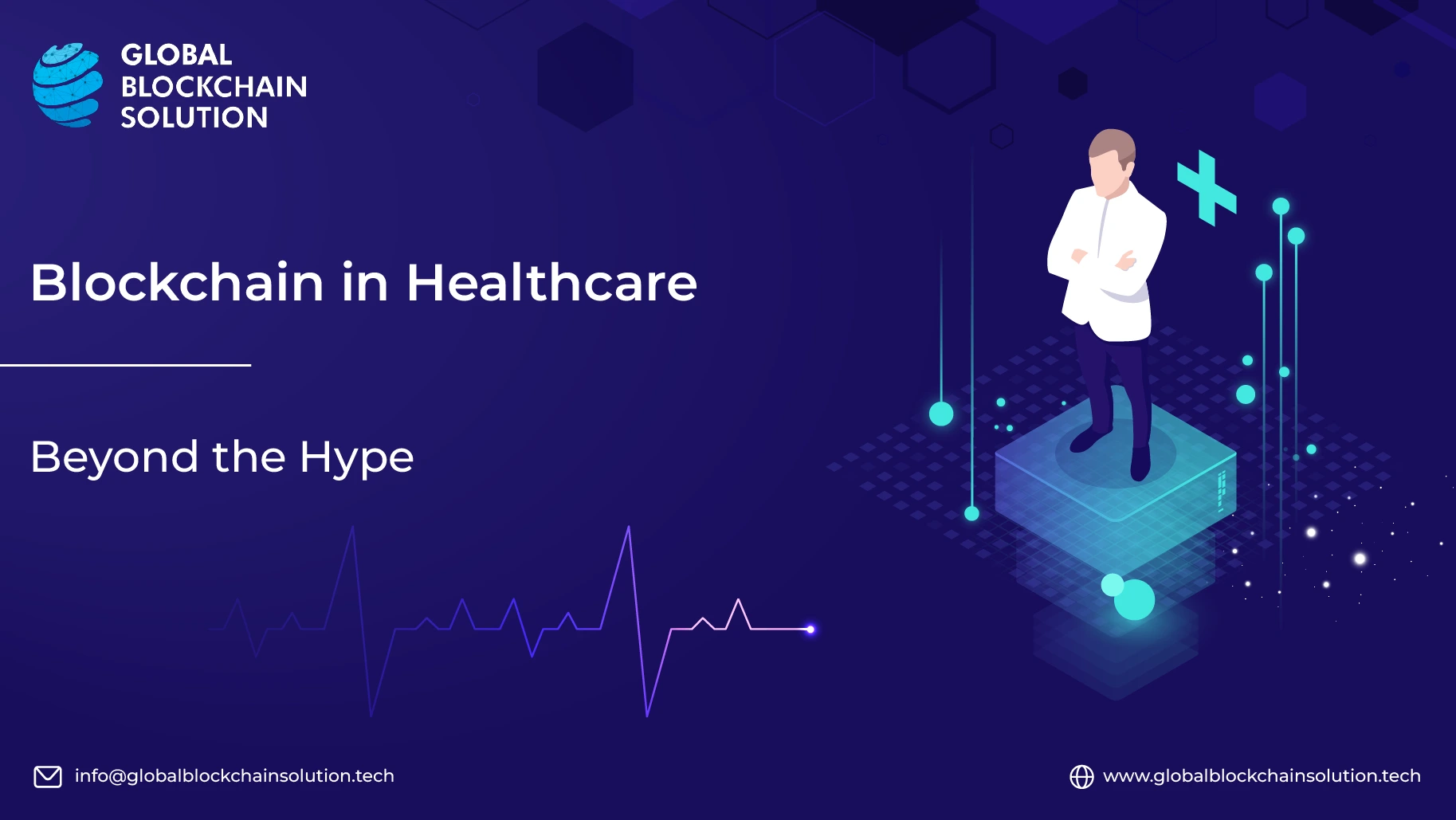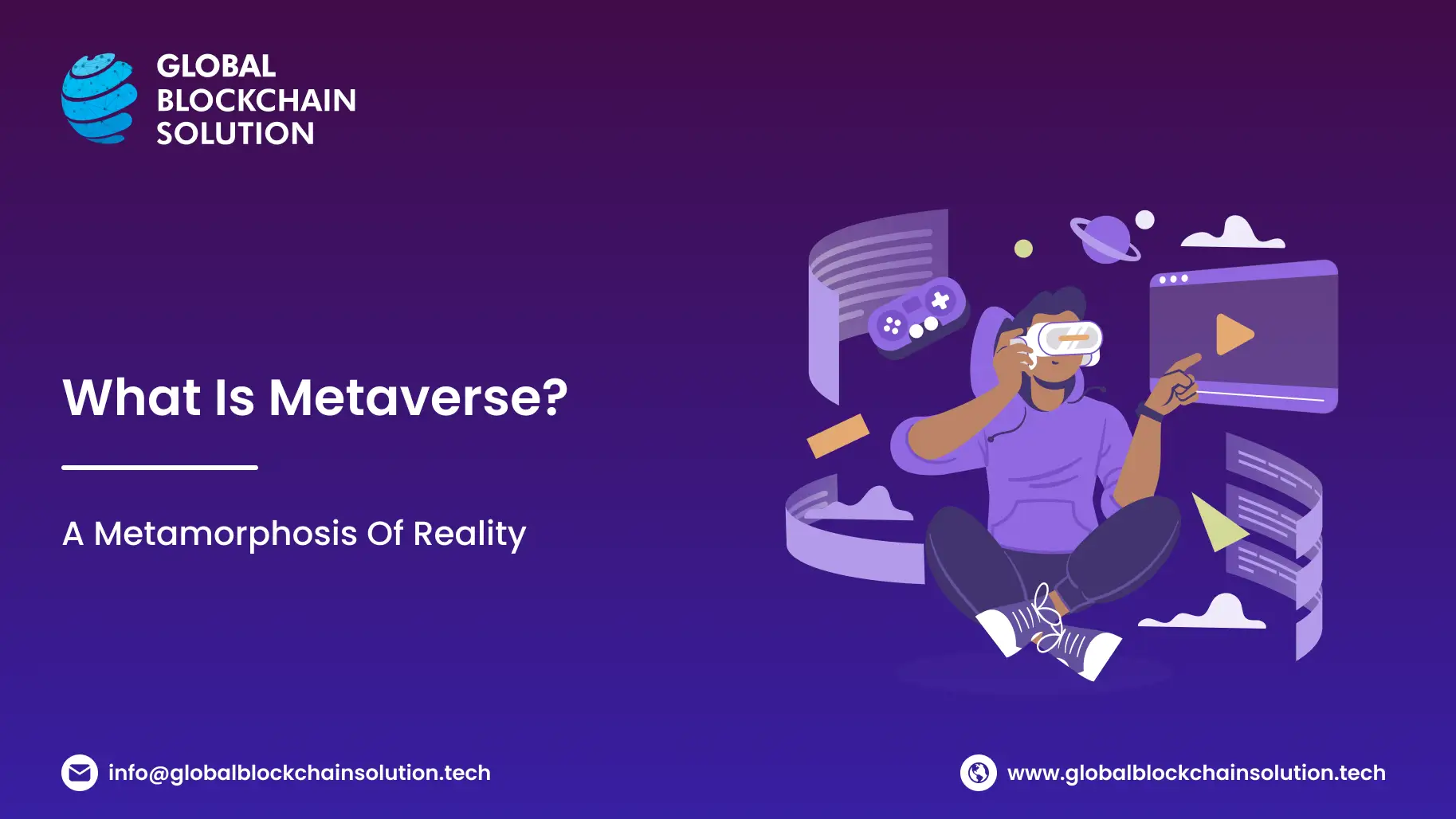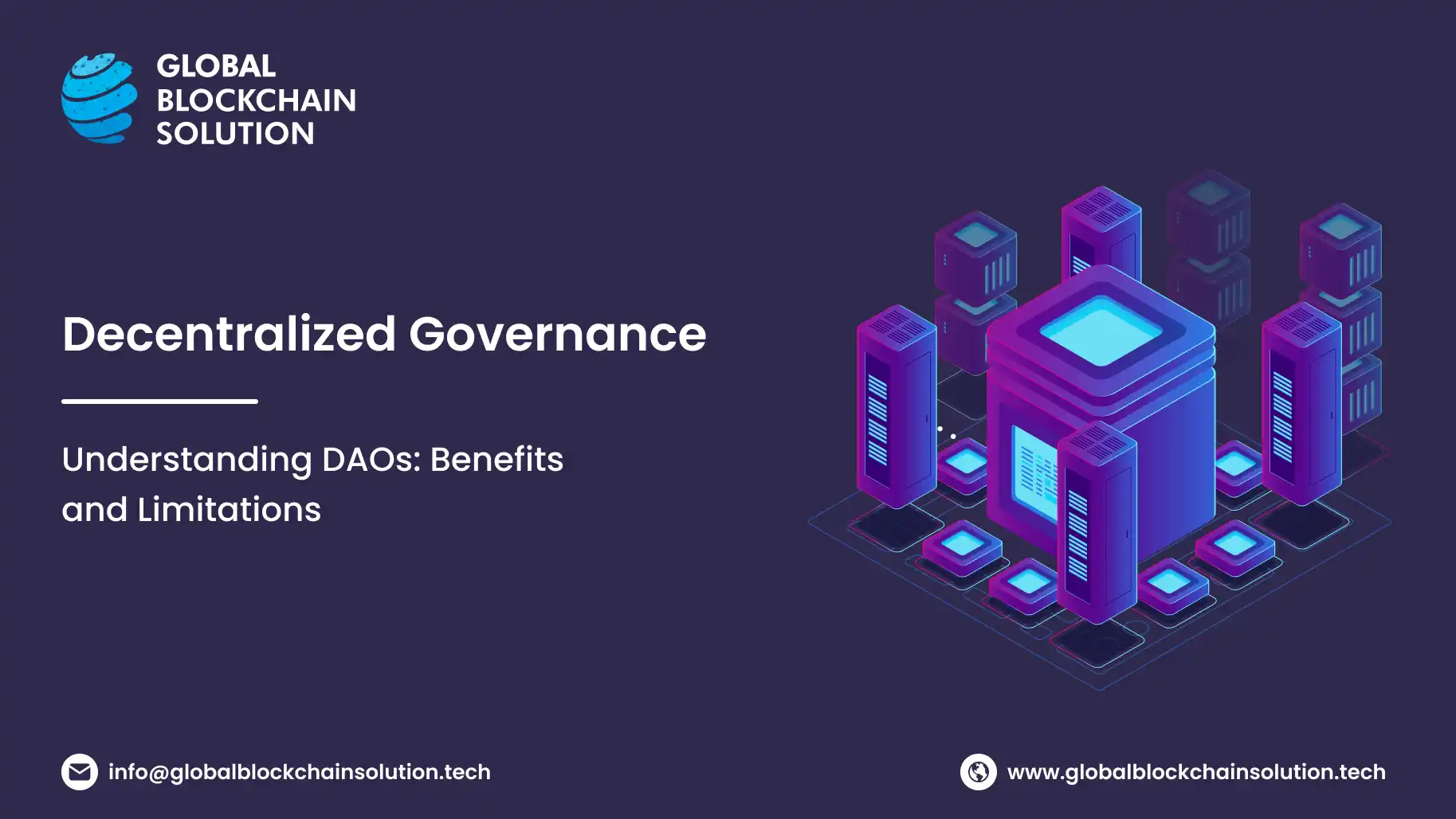Imagine if the security of over half a billion healthcare records was compromised in just over a decade. Shocking, right? Well, that's exactly what happened between 2009 and 2023. According to the HIPAA Journal, over 519,935,970 healthcare records were compromised across 5,887 healthcare institutions.
To give you a better idea, that's 3.8 times the populations of 100 UN-recognized countries put together. It's a clear sign that our healthcare system desperately needs an upgrade.
Enter blockchain technology, a potential game-changer that offers not only tighter security but also makes sharing medical information more efficient and transparent.

Today, at Global Blockchain Solution, we will dive into how blockchain can transform healthcare, making it safer and more reliable for everyone. We will also explore some of blockchain’s limitations in healthcare and try to explore existing projects.
So, without further ado, let’s go!
This Article Contains:
Benefits of Blockchain in Healthcare
There is a range of benefits of blockchain for healthcare that it can transfer and is transferring to the segment.
Some of the benefits of blockchain in healthcare include:
1. Data Management and Security
In the evolving landscape of healthcare, blockchain technology is heralding a new era of data management and security, offering solutions that are both innovative and practical. Companies like BurstIQ and Medicalchain are pioneering this transformation with specific applications designed to enhance medical record privacy, security, and interoperability.
BurstIQ's blockchain platform stands out for its robust data management capabilities, enabling the secure handling of vast amounts of health data.

Medicalchain, on the other hand, uses blockchain to maintain the integrity and accessibility of health records across the healthcare ecosystem. Creating a single, immutable point of truth ensures that patient information is securely shared among authorized healthcare providers, thereby protecting patient identity and enhancing the quality of care.
Guardtime's collaboration with the Estonian government to implement blockchain for healthcare exemplifies one of the largest applications of blockchain in the segment. This initiative has bolstered cybersecurity measures, making Estonia the global leader in secure digital health records.
Blockchain technology also allows for the secure sale, sharing, or licensing of data while ensuring compliance with stringent regulations like HIPAA. Its real-world implications extend to combating prescription drug abuse, providing a comprehensive view of patients' health and medication histories.
These examples demonstrate the multifaceted benefits of blockchain in healthcare, from enhancing data security and privacy to improving the efficiency of healthcare delivery and coordination.
Through decentralization, blockchain technology ensures that patient data is not only safe but also accessible and immutable, enabling a level of data sovereignty and trust previously unattainable in traditional healthcare data management systems.
2. Supply Chain Transparency
Blockchain technology is being actively deployed in the pharmaceutical supply chain to enhance transparency and combat counterfeit drugs.
By providing a decentralized and immutable ledger of transactions, blockchain allows for the secure and efficient tracking of drug products from the manufacturer to the end consumer.
One of the notable pilot programs in this area was conducted by Merck, IBM, KPMG, and Walmart in 2019. This program was designed to evaluate the use of blockchain in meeting the requirements of the U.S. Drug Supply Chain Security Act (DSCSA) for drug traceability.
For the uninitiated, the DSCSA is tasked with identifying and tracing drugs distributed in the United States as they move throughout the supply chain. One of its key responsibility areas includes outlining steps to build an electronic, interoperable system.

The 2019 pilot program successfully demonstrated blockchain’s ability to meet the DSCSA requirements to identify, track, and trace prescription medicines and vaccines distributed. It also showed how blockchain for healthcare could potentially improve patient safety by reducing product recall time from a few days to a few seconds.
The pilot participants were also able to incorporate the technology to determine product quality and the origin of the products. This pilot project is considered an important milestone in demonstrating how blockchain technology can help bring the pharmaceutical supply chain into regulatory compliance.
FFF Enterprises, a leading supplier of critical-care biopharmaceuticals, vaccines, and plasma products, utilizes the MediLedger Network blockchain to ensure the legitimacy of saleable drug returns. This is also a critical step mandated by the DSCSA to prevent counterfeit drugs from entering the supply chain.
Through MediLedger, FFF aims to improve pricing accuracy and eliminate chargeback errors among its pharmaceutical supplier and group purchasing organization (GPO) trading partners, while streamlining the procurement process for its dispenser customers.
The role of blockchain in ensuring drug authenticity, traceability, and patient safety is gradually becoming paramount. It marks significant strides towards a secure pharmaceutical supply chain. As more pharmaceutical companies adopt blockchain, it is expected to play an increasingly important role in securing the global pharmaceutical supply chain.
3. Clinical Trials and Research
Blockchain technology is making significant strides in revolutionizing clinical trials, enhancing data integrity, security, and operational efficiency across various phases of the trial process.
By offering a decentralized, immutable ledger for recording and sharing data, blockchain presents solutions to longstanding challenges in clinical trials, including patient recruitment, data management, and ethical compliance.
During the initial phases of clinical trials, blockchain can streamline processes such as patient recruitment and retention, clinical and patient data management, and facilitate faster payment portals.

For example, Bloqcube is improving operational efficiency by automating payment processes, ensuring that patients and physicians are compensated more swiftly for their participation, thereby addressing one of the major operational bottlenecks in clinical trials.
As trials progress into more advanced phases, blockchain's ability to offer transparent, tamper-proof records becomes increasingly valuable.
It ensures data integrity, enhances patient privacy, and supports ethical compliance by enforcing the collection of informed consent through smart contracts. These contracts automatically execute transactions only when predefined conditions are met, thus embedding ethical checkpoints directly into the trial's workflow.
Also Read: What are smart contracts?
Moreover, blockchain's potential extends to improving data management and patient recruitment across all trial phases.
By enabling secure, efficient data sharing and reducing the friction in stakeholder coordination, blockchain databases can significantly reduce the time and cost associated with clinical trials.
This is particularly critical in phases III and IV, where the scale of patient participation and the global reach of trials introduce complex data management challenges.

The ability to track every record change, securely exchange data across multiple platforms, and maintain data integrity ensures a trustworthy foundation for trial outcomes.
The implementation of blockchain in clinical trials is not without its challenges, including technological barriers such as blockchain scalability and interoperability, which we will discuss in the limitations section, as well as the need for cross-functional development of blockchain knowledge and regulatory frameworks.
Also Read: What is the blockchain trilemma?
4. Health Information Exchange (HIE)
Blockchain technology is revolutionizing the Health Information Exchange (HIE) by fostering a seamless and secure flow of medical data across different healthcare stakeholders.
The potential of blockchain to enhance the efficiency, security, and interoperability of Electronic Health Records (EHRs) is significant, with various projects and companies already demonstrating practical applications of blockchain in healthcare.
For instance, companies like Avaneer Health, ProCredEx, and Patientory are at the forefront of leveraging blockchain to improve healthcare outcomes via the effective exchange of data.
Avaneer Health is backed by major healthcare leaders and uses blockchain to support better claims processing, secure healthcare data exchanges, and keep provider directories maintained and up-to-date. On average, Avaneer’s blockchain-based approach saves up to $1.65 per claim for the payers and $5.75 per claim for the providers.

On the other hand, ProCredEx has created a distributed ledger for healthcare credentials data, enhancing the efficiency and immutability of complex datasets. It decreases redundant compliance tasks by 75% while driving the process efficiency to 95%, thereby achieving an average audit timeline of 17 seconds.
Blockchain can offer a new model for HIE, making EHRs more efficient, disintermediated, and secure.
The implementation of blockchain in healthcare, however, goes beyond just EHRs. It includes applications in medical supply chain management, where companies like Chronicled, Embleema, and others are using blockchain to ensure the authenticity of medicines, speed up drug development through secure data collection and analysis, and combat counterfeit drugs.
These applications highlight blockchain's versatility and its potential to address critical issues in healthcare, from improving patient care to ensuring the integrity of the pharmaceutical supply chain.
5. Enhanced Patient Engagement
Blockchain technology is not only transforming the way healthcare data is managed but also redefining patient engagement. By placing patients at the center of the healthcare ecosystem, blockchain empowers them with more control over their health information.
MedRec, developed on the Ethereum blockchain, stores all of a patient’s information in one place, making it simpler for patients and doctors to access. In its current design, providers maintain the blockchain through the Proof of Authority (PoA) consensus mechanism.
Also Read: What is Consensus Mechanism in Blockchain? 25 Consensus Mechanisms to Choose From
This system prioritizes patient agency, giving a transparent and accessible view of medical history.
Another great example includes MediBloc, which enables patients to manage their health data effortlessly. Using MediBloc, a patient’s EHR travels securely across healthcare systems. Its patient-centric architecture keeps the patient at the center of control for secured storage of EHR data.
This architecture relies on blockchain technology and the interplanetary file system (IPFS). To control unauthorized users, the secure password authentication-based key exchange (SPAKE) implements smart contract-driven access control to EHR transactions and access policies.
In addition to MedRec and MediBloc, there are several other blockchain-based projects aimed at enhancing patient engagement. For instance, Patientory, as mentioned above, aims to foster a closer relationship between doctor and patient through the use of blockchain technology.
It provides a secure platform for patients to store and manage their health information, thereby empowering them with data access and enhancing their engagement in their healthcare.
In conclusion, blockchain technology has the potential to significantly enhance patient engagement in healthcare by providing secure, transparent, and patient-centric solutions. It can transform the way patients interact with healthcare providers and manage their health data, leading to improved healthcare outcomes.
Limitations of Blockchain in Healthcare
While blockchain technology holds significant potential for transforming healthcare, it’s important to acknowledge that it also comes with its own set of challenges and limitations.
1. Technical Complexity and Lack of Standardization
Blockchain for healthcare is complex and requires a deep understanding of the workings of both. There are different types of blockchains, each with its unique features and capabilities.
For instance, Ethereum is known for its smart contract functionality, which can automate certain tasks in the healthcare process. Hyperledger Fabric, on the other hand, is a permissioned blockchain, meaning it allows for more control over who can access the network, which can be beneficial in a healthcare context where privacy is paramount.
Also Read: Permissioned vs Permissionless Blockchain: Characteristics, Differences, and Examples
Solana is known for its high throughput and low fees, which could be advantageous in scenarios where a large number of transactions need to be processed quickly. Implementing these different blockchains for various use cases requires awareness of both the process and the specific blockchain platform.
This technical complexity can pose a significant barrier to the widespread adoption of blockchain in healthcare.
2. Scalability and Performance Issues
As the number of transactions on the blockchain increases, the time taken to process each transaction also increases. This can lead to delays in accessing critical health information when needed. Moreover, storing large records on the blockchain, such as full electronic medical records or genetic data records, would be inefficient and costly.
Some blockchains, like Solana, are designed to handle a high volume of transactions, but even they may struggle with the vast amount of data involved in healthcare.
3. Interoperability and Integration Challenges
Interoperability between diverse healthcare systems remains challenging. Blockchain for healthcare can provide a solution to this problem by creating a unified platform for data exchange. However, achieving this level of interoperability requires significant coordination among different healthcare providers and systems.

Moreover, integrating blockchain technology into existing healthcare systems can be a complex process. It requires careful planning and execution to ensure that the blockchain system can interact effectively with existing systems and processes.
4. Regulatory and Legal Concerns
Regulatory compliance is another major challenge in implementing blockchain in healthcare. Healthcare providers must ensure that their use of blockchain technology complies with all relevant laws and regulations, including those related to patient privacy and data security.
Different countries have different regulations, and a blockchain solution must be flexible enough to comply with all of them.
5. Resistance to Data Sharing
In the healthcare industry, certain entities, such as hospitals and insurance payers, may be reluctant to share data. For instance, hospitals might view their cost data as a competitive advantage and may be hesitant to share this information with insurance companies for fear of receiving different rates for different patients.
This reluctance can pose a significant challenge to the implementation of blockchain, which relies on the sharing and transparency of data.
Despite these challenges, numerous healthcare organizations are exploring ways to overcome these limitations and harness the potential of blockchain technology.
For instance, IBM’s partnership with Chinese supply chain management firm Easysight Supply Chain Management aims to improve supply chain visibility and traceability in the pharmaceutical industry.
Similarly, a research study published in 2023 investigated the implementation of blockchain technology in the supply chain of an Egyptian pharmaceutical company. The study revealed the potential benefits of adopting blockchain technology, including reduced contracting costs, processing costs, and lead times, and ensuring the safe delivery of medications.
So, go ahead and create the next major blockchain project in healthcare. Feel free to reach out to Global Blockchain Solution’s passionate specialists to resolve your queries if needed. Contact us via call, WhatsApp, or email, or book a free 15-minute consultation with our experts to remove your blockers.
Godspeed!
Frequently Asked Questions
1. What are the benefits of using blockchain in healthcare?
Blockchain technology can enhance security and confidentiality, optimize resource allocation, and build a unified health data repository accessible to physicians, patients, and other stakeholders.
2. What are the limitations or challenges of implementing blockchain in healthcare?
While blockchain has immense potential, practical applications of the technology in real-world healthcare settings are still nascent. Challenges include the need for widespread adoption, interoperability issues, and regulatory considerations.
3. How can blockchain improve patient data security in healthcare?
Blockchain’s ability to keep an incorruptible, decentralized, and transparent log of all patient data makes it ideal for security applications. It can protect the sensitivity of medical data and allow quick, safe sharing of information between patients, doctors, and healthcare providers.
4. How can blockchain be used in managing the healthcare supply chain?
Blockchain can be particularly useful in verifying the identity of vendors, managing supply chain transactions, and tracking the permits and staff access to facilities, medical records, or other health data.
5. How to develop a healthcare-related blockchain application?
Developing a healthcare-related blockchain application requires a deep understanding of both healthcare processes and blockchain technology. It’s recommended to tap into the expertise of a renowned player in the field like Global Blockchain Solution, who can guide you through the process, from conceptualization to implementation. Book a free 15-minute consultation today.




